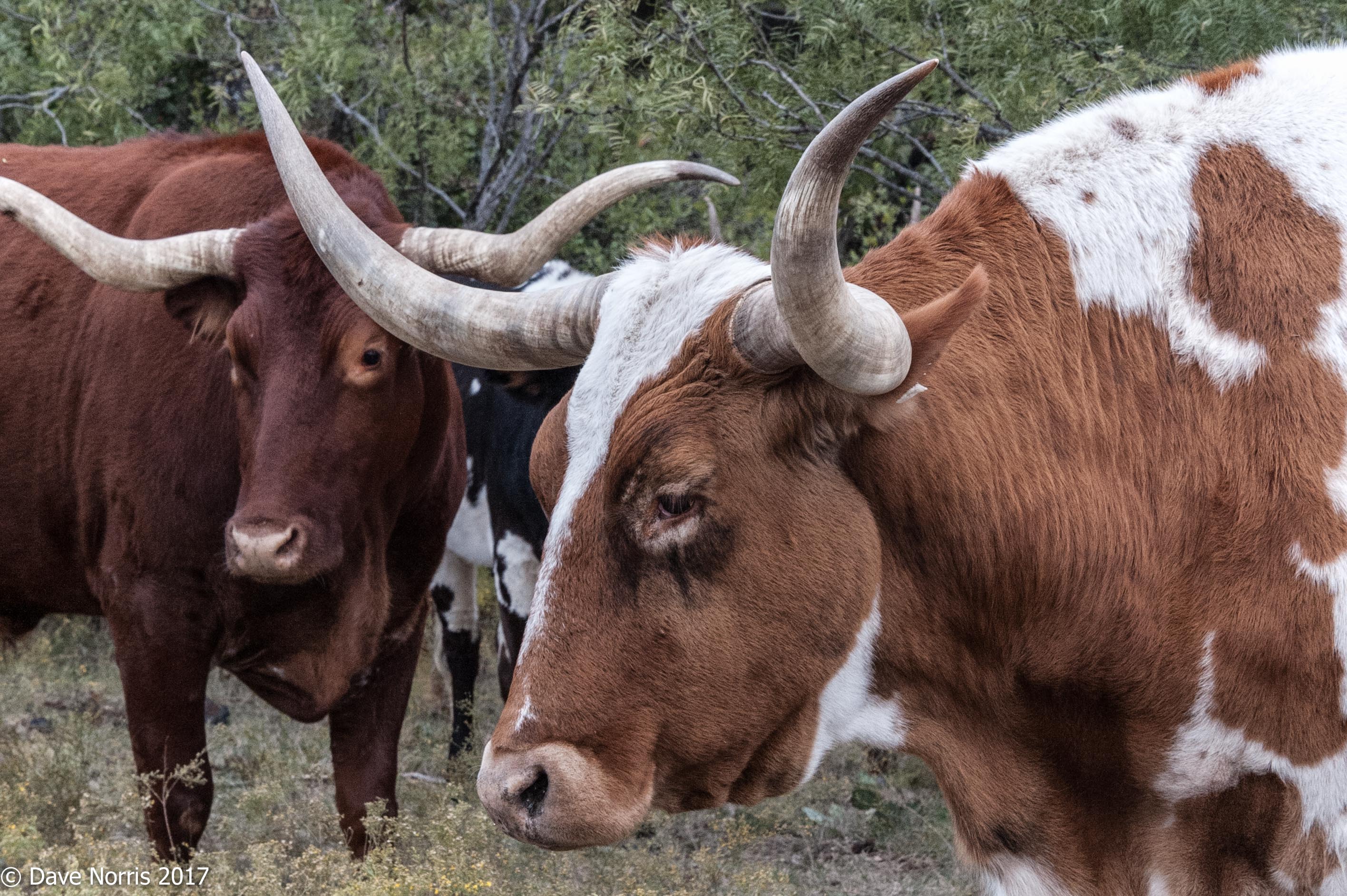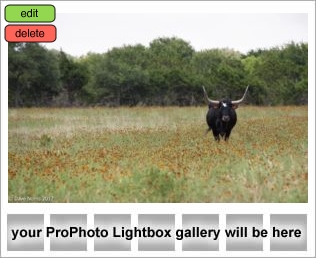The Texas Longhorn should be named the “official animal of the Texas Backroad”. The long cattle drives during the 1800’s when millions of cattle were herded northward from Texas defines to most the “old west”. J Frank Dobie , wrote in his 1941 classic, The Longhorns, that the Chisholm Trail, from Texas to Kansas; “initiated the most fantastic and fabulous migration of animals controlled by man that the world has ever known or can ever know”. Without the Longhorns and these drives the cowboy probably would not have become a folk hero.
In the late 1400’s cattle were introduced to North America by Spanish conquistadors who were searching for gold. These Spanish explorers turned their cattle loose on islands in the Caribbean. On their own they grew larger and wild. They thrived growing heavy boned, skinny, and swift. Their long horns provided offensive and defensive protection. Soon they developed a keen cleverness and a fiery temper.
In the 1500’s as Spanish explorers set sail whey brought with them herds of cattle to have beef while on their expeditions. These explorers held to the Castilian tradition that grass was a gift of nature and did not fence in their herds. Many of these cattle wandered off and joined the wild population. In the 1800’s, early American settlers to the Texas Territories, at that time a part of Mexico, primarily raised European breeds of cattle including English Longhorns. The Texas Longhorn resulted from the accidental crossbreeding of the these wild cattle, descendants of the cattle left from earlier explorers and the cows of early American settlers. The Texas Longhorn was easily identifiable as a wild, ornery, multicolored bovine weighing up to 1,500 pounds with a horn spread of 4 to 7 feet.
The Longhorn had few enemies. Native Indians did not hunt them, they preferred to hunt buffalo which were tamer and easier to kill. They also preferred the buffalo meat and found more uses for the buffalo hides and bones. Other predators, such as wolves were shied away from the mean and deadly Longhorns. On the other hand, anglo Americas preferred beef over the buffalo meat – creating a large market for early cattlemen. During a cows life time she would usually have about 12 calves providing a steady supply for this market.
During the Civil War, the unattended Longhorns flourished and by 1865 somewhere between 5 to 6 million Longhorns resided in Texas, most were wilded and unbranded. Confederate veterans who had returned from the war began to build up herd by branding these unmarked cattle. At that time a steer was worth about $4.00 in Texas. In meat-packing towns in the North, such as Chicago and Cincinnati that same animal would sell for about $40.00. The only issue was how to get the steers to these markets. In 1866 more than 25,000 steers were driven from Texas toward Kansas and Missouri, but because of disease and cow thieves many did not make it.. In 1867, Abilene, Kansas, which was the railhead of the Kansas & Pacific, opened up a major market and became the first of what was know as a “cow town”. For the next 20 years cattlemen drove Longhorns along these long trails. A drive would usually cover about 1,500 miles and take anywhere from 4 to 6 months. Long hours, brutal conditions, and very dangerous work, mostly in a saddle. This work appealed to a certain type of man – The American Cowboy. These cowboys would earn about $30.00 a month.
A trail drive often resulted in a lot of money for the cattle owner. A steer sold for about $40.00 and the trail expenses were about $1.00 a head. The average drive was 2,000 head. One of the largest recorded herds to leave Texas was in 1869 with 15,000 head. A lot of money was being made and a large amount of beef was being exported to Europe. Investors from England and Scotland started to buy up American ranches as investments. They soon were introducing their black Angus and white faced Herefords. These were beefier cows. They also brought in their Shorthorns to upgrade herds of Longhorns – Shorthorns were meatier and the Longhorns were hardier. This cross resulted in a more marketable animal. By the late 1800’s the Texas Longhorn appeared to be on their way to being bred out of existence. With the end of open range fenced pastures made it more economical to raise breeds that had better beef and the need for self-sufficant cattle was no long a necessity.
In the early 20th century the Texas Longhorns were nearing extinction. A few Texas ranchers held onto small herds mostly for sentimental reasons, and now these Longhorns are making an exciting come back (hopefully we will be able to say the same thing soon about the UT Longhorns). These cattle are now in high demand. As their early ancestors their ease of calving, resistance to diseases and their ability to thrive on poor pastures. They also provide a meat that is much leaner than many other breeds of cattle.
The most amazing thing about the TEXAS LONGHORN is that it was created entirely by nature. It became the product of adapting to it’s environment. It is the only breed in America which, without the aid of man, is truly adapted to America. J. Frank Dobie stated in his book, The Longhorns, “had they been registered and regulated, restrained and provided for my man, they would not have been what they were.”
With the power invested by FOCUS ON THE BACKROADS I now declare the TEXAS LONGHORN as the official mascot of this Blog.

 The Texas Longhorn should be named the “official animal of the Texas Backroad”. The long cattle drives during the 1800’s when millions of cattle were herded northward from Texas defines to most the “old west”. J Frank Dobie , wrote in his 1941 classic, The Longhorns, that the Chisholm Trail, from Texas to Kansas; “initiated the most fantastic and fabulous migration of animals controlled by man that the world has ever known or can ever know”. Without the Longhorns and these drives the cowboy probably would not have become a folk hero.
The Texas Longhorn should be named the “official animal of the Texas Backroad”. The long cattle drives during the 1800’s when millions of cattle were herded northward from Texas defines to most the “old west”. J Frank Dobie , wrote in his 1941 classic, The Longhorns, that the Chisholm Trail, from Texas to Kansas; “initiated the most fantastic and fabulous migration of animals controlled by man that the world has ever known or can ever know”. Without the Longhorns and these drives the cowboy probably would not have become a folk hero.